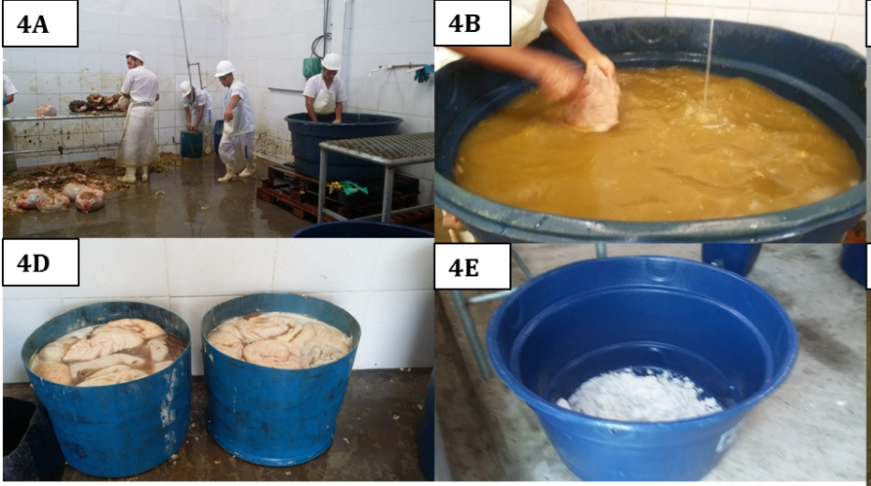Use of bovine fetal blood, omasum and hears in a slaughterhouse in São Luís County – Maranhão State
DOI :
https://doi.org/10.21708/avb.2020.14.3.9103Résumé
The aim of the present study is to report the technical procedures applied to fetal blood, omasum and ears deriving from beef cattle slaughter in a slaughterhouse in São Luís County – Maranhão State. A case study, divided into three stages, was conducted for such a purpose: (i) technical visitations to observe and better understand waste generation and its use process; (ii) analysis of slaughterhouse records about waste destination; and, (iii) photographic records for the best analysis of waste-use conditions. Based on the results, the slaughterhouse does not have the appropriate infrastructure to use the assessed waste given its artisanal techniques, which are not in compliance with the sanitary, hygiene and humanitarian legislation in Brazil. The use of waste presenting economic and commercial value is feasible and, yet, a way to go on with the technological process adopted by the assessed slaughterhouse. However, it is of paramount importance adjusting the implemented procedures and techniques in order to achieve production-management update, technological advancements in the industrial structure, and economic gains. Nevertheless, these actions must be in compliance with environmental prevention principles. It is also important emphasizing the need of rigorous inspections by the Official State Inspection and Livestock and Agriculture Defense Service in the assessed slaughterhouse.
Téléchargements

Téléchargements
Publié-e
Numéro
Rubrique
Licence
Autores que publicam na Acta Veterinaria Brasilica concordam com os seguintes termos: a) Autores mantém os direitos autorais e concedem à revista o direito de primeira publicação, com o trabalho simultaneamente licenciado sob a Licença Creative Commons Attribution que permite o compartilhamento do trabalho com reconhecimento da autoria e publicação inicial nesta revista. b) Autores têm autorização para assumir contratos adicionais separadamente, para distribuição não-exclusiva da versão do trabalho publicada nesta revista (ex.: publicar em repositório institucional ou como capítulo de livro), com reconhecimento de autoria e publicação inicial nesta revista. c) Autores têm permissão e são estimulados a publicar e distribuir seu trabalho online (ex.: em repositórios institucionais ou na sua página pessoal) a qualquer ponto antes ou durante o processo editorial, já que isso pode gerar alterações produtivas, bem como aumentar o impacto e a citação do trabalho publicado (Veja O Efeito do Acesso Livre).


 Esta obra está licenciada com uma Licença
Esta obra está licenciada com uma Licença 